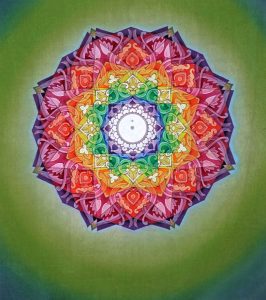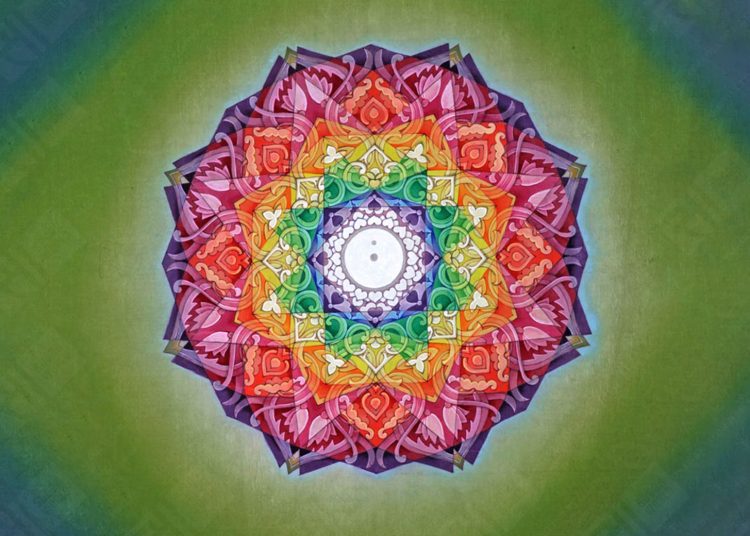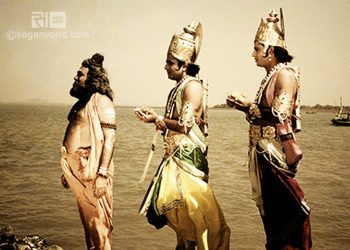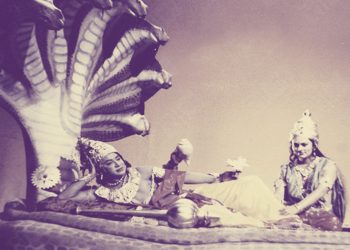Sahasrara Chakra Mandala – 7th Chakra – Sacred Geometry Art

Few medieval hatha yoga books, such as the Ivasahit and the Tirumantiram, mention the Sahasrara; however, the Pacimnya and Nath lineages do not; the Kubjikamatatantra only mentions the six lower chakras. The
Samhita claims that the Sahasrara is beyond the body, although other scriptures situate it at the fontanelle or brahmarandhra on top of the head, where the soul departs the body upon death.
According to legend, the Sahasrara resembles a lotus flower with 1,000 colorful petals. Each layer has about 50 petals, and there are 20 layers altogether. A bright triangle that can point either upwards or downwards is etched within the round moon section of the golden pericarp.
The most subtle chakra in the system sometimes referred to as the thousand-petalled lotus, is supposed to relate to pure consciousness. All the other chakras are said to originate from this chakra. The experience of Nirvikalpa Samadhi occurs when a yogi is able to get their kundalini (energy of consciousness) to this level.The crown of the head is associated with Sahasrara or Sahastrar.
The fontanelle and the point where the coronal and sagittal sutures of the skull meet are frequently related to it.Sahasrara communicates a comparable archetypal idea to that of Kether in the Kabbalistic Tree of Life, which rests at the top of the tree and symbolizes pure consciousness and unity with God, as many have noticed in the West (including Charles Ponce in his book Kabbalah).
The “most arcane subtlety,” Akhfa, is a Lataif in the Lataif-e-Sitta Sufi system that is situated on the crown. It is the center of unification where direct revelations of Allah’s beatific visions take place.
Mandala is the Sanskrit word for circle. Other chakra systems may have eight or more chakras, and may also discuss the hues and characteristics of each chakra. However, the seven primary chakras are most frequently represented by these circular symbols.
And the chakra symbols are all about that.
You are connected to the level of Being that contains all immaterial qualities and forms through the crown chakra’s mandala. You experience your own Self as a component of the all-pervasive pure Being that contains all matter because of the clarity and openness of your consciousness
Hinduism uses mandalas as a religious and symbolic representation of the cosmos. The circular shape represents the idea that everything is interconnected and that life derives from a single source of life force.
The mandala symbols here stand in for the viewer’s personal spiritual path. It stands for both the requirement for every one of us to discover our own place in the universe as well as the global unity shared by all things in the cosmos. Indeed, heavy. But also really beautiful.
Additionally, they are designed to support our yoga and meditation routines.
The Artist – Pieter Weltevrede
Pieter Weltevrede – is a Master “Sacred-Artist” based out of the Nederlands. After a many years of guidance, under his guru Late Harish Johari a successful author, a gifted painter and sculptor, a lifetime scholar, an inspiring teacher, a splendid cook, an ayurvedic massage miracle, etc., Pieter embarked on his own journey amalgamating ancient Indian knowledge with his own western sensibilities evolving an art form that appeals to todays international audience. He has been practising his art form from the last 40 years now.
His original paintings are in water colours on silk with a wash-technique that gives them a very three-dimensional feel. The complexity and detail in his works are a super-human endeavour as he continues to live a mundane life travelling between the Western World and India.
Here, ‘Goddess Saraswati’ paintings are printed on coated matt paper.
Click Here to visit our Shop Site.









